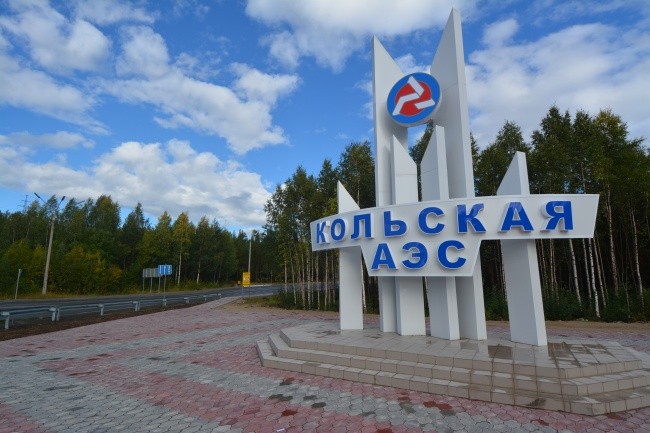The second reactor unit at the Kola Nuclear Power plant near Murmansk has received the nod from Russian regulators to operate until 2034, making it one of the longest running commercial reactors in the world and raising a host of environmental and technical concerns.
The second reactor unit at the Kola Nuclear Power plant near Murmansk has received the nod from Russian regulators to operate until 2034, making it one of the longest running commercial reactors in the world and raising a host of environmental and technical concerns.
Currently, the longest serving reactor ever is the Oyster Creek Nuclear Generating Station in the United States, which, after running for 49 years, was finally shut down in 2018. Should the Kola plant’s No 2 reactor run out the term of its new lifetime extension, it would be 59 by the time it is retired.
Kola’s No 2 reactor, which came online in 1975, is not alone. The plant’s other three units, which are all VVER-440 reactors, are likewise operating on sometimes numerous lifetime extensions that would bring them to ripe old age before their operations are stopped. The No 1 reactor at the Kola plant, which started generating power 1973, was granted a second runtime extension two years ago, and won’t retire until 2033. The No 3 and No 4 reactors – which came online in the early 1980s – will operate until 2027 and 2029, respectively.
The prolonged operations of these reactors has been cause for concern among some experts, who say that bringing the units into step with current industry safety demands is difficult, given their aging design.
In the shadow of the 2011 Fukushima disaster, which resulted in a triple reactor meltdown, worldwide nuclear building standards have tightened across the board in ways that some fear have left the Kola Nuclear Power Plant’s reactors behind.
Yet more and more often, extending runtime extensions is becoming a general practice throughout the nuclear industry – and not only in Russia. Throughout central and western Europe, there are some 90 nuclear reactors that are currently under review for lifespan extensions, including many in countries like France, the United Kingdom, the Netherlands, Switzerland and Finland. Six of the 15 Soviet-built nuclear reactors in Ukraine are operating on extended lifespans, with the remaining expected to follow.
For its part, Germany has elected altogether to shutter its nuclear power plants – a goal it hopes to reach by 2022. But the move is proving politically and technically complex. The waste resulting from the closures – thought to eventually comprise some 2,000 containers – must be stored in safely the same spot for 1 million years, and experts are short on ideas about where, exactly, to do that. The costs, too, are astronomical, with the phase-out expected to reach nearly $73 billion.
It is expenses like these that are so deviling to Russia’s nuclear industry, which has failed to build up a robust savings account for decommissioning expenses. Like other countries, Russia collects decommissioning funding through electricity tariffs charged to customers. But unlike other countries, Russia has only been doing this since 1995, shortly after the fall of the Soviet regime and the introduction of a market-based economy. As a result, issuing lifetime extension to elderly reactors offers Moscow a cheap – and what many countries consider a safe – alternative to the more costly route of dismantlement.
Still, environmentalists are right to be nervous. Scientific research on how nuclear reactors age – and on the kinds of problems that emerge as they do – has come mostly from studies in research reactors. While these studies have offered some insight on how reactors weather over time, many experts say that the data on how commercial reactors behave in their twilight years are still too inconclusive to be trusted.
But Rosatom officials insist that the extended reactors at the Kola Nuclear Power Plant are safe, and offers figures to back up its claims. According to a report in the Barents Observer, the corporation spent some 4.5 billion rubles – or about $72 million – on upgrades to the No 2 reactor before regulatory officials granted the runtime extension. Plant officials likewise eliminated numerous safety violations and are in the process of eliminating them.




